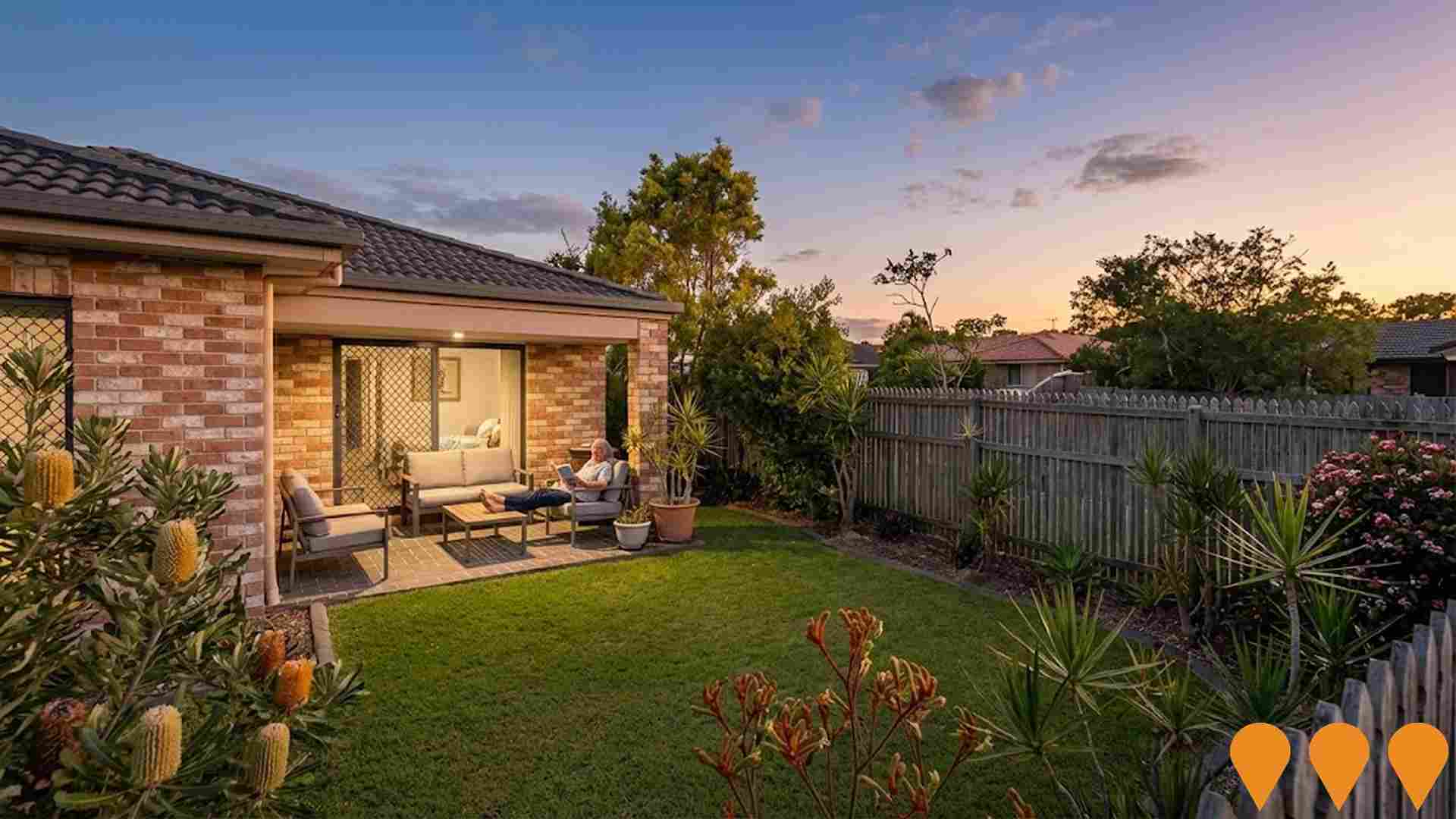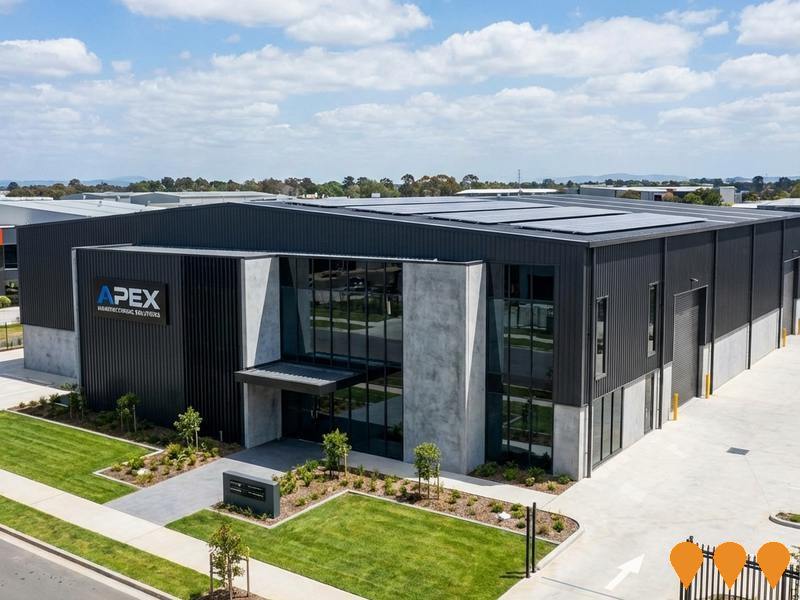Chart Color Schemes
est. as @ -- *
ABS ERP | -- people | --
2021 Census | -- people
Sales Activity
Curious about local property values? Filter the chart to assess the volume and appreciation (including resales) trends and regional comparisons, or scroll to the map below view this information at an individual property level.
Find a Recent Sale
Sales Detail
Population
An assessment of population growth drivers in Tweed Heads South reveals an overall ranking slightly below national averages considering recent, and medium term trends
Tweed Heads South's population is 8,579 as of November 2025. Since the 2021 Census, which reported a population of 8,423 people, there has been an increase of 156 people (1.9%). This change is inferred from the estimated resident population of 8,583 in June 2024 and an additional 143 validated new addresses since the Census date. The population density is 1,014 persons per square kilometer, comparable to averages seen across locations assessed by AreaSearch. Tweed Heads South's growth rate of 1.9% since the census is within 1.4 percentage points of the SA4 region's growth rate of 3.3%. Overseas migration contributed approximately 54.5% of overall population gains during recent periods.
AreaSearch uses ABS/Geoscience Australia projections for each SA2 area, released in 2024 with a base year of 2022. For areas not covered by this data, AreaSearch utilises NSW State Government's SA2 level projections, released in 2022 with a base year of 2021. Growth rates by age group from these aggregations are applied to all areas for the years 2032 to 2041. Based on demographic trends and latest population numbers, Tweed Heads South is expected to increase by 562 persons to 2041, recording a gain of 6.5% in total over the 17-year period.
Frequently Asked Questions - Population
Development
AreaSearch assessment of residential development drivers sees a low level of activity in Tweed Heads South, placing the area among the bottom 25% of areas assessed nationally
Tweed Heads South has granted approximately 33 residential property approvals annually. Over the past five financial years, from FY21 to FY25, it approved a total of 165 homes and an additional six in FY26. On average, around 1.2 new residents have arrived per new home each year over these years. However, this figure has accelerated to 13.2 people per dwelling over the past two financial years, indicating increasing demand.
The average expected construction cost value of new homes is $199,000, which is below regional levels, suggesting more affordable housing options for buyers. This year alone, Tweed Heads South has recorded $50.4 million in commercial development approvals, reflecting strong local business investment. Compared to the rest of NSW, Tweed Heads South has seen slightly higher development activity, with 27.0% more approvals per person over the past five years.
This balance between supply and demand maintains reasonable buyer options while sustaining existing property demand. Recent construction comprises predominantly detached dwellings (81.0%), reflecting the area's suburban identity and its suitability for buyers seeking space. However, developers are constructing a higher proportion of detached housing than the current pattern implies (51.0% at Census), suggesting persistent strong demand for family homes amidst densification trends. The location has approximately 1564 people per dwelling approval, indicating an established market. Future projections estimate that Tweed Heads South will add around 557 residents by 2041. Given current development patterns, new housing supply should meet demand effectively, offering good conditions for buyers and potentially facilitating further population growth beyond current projections.
Frequently Asked Questions - Development
Infrastructure
Tweed Heads South has moderate levels of nearby infrastructure activity, ranking in the top 50% nationally
Infrastructure changes significantly influence an area's performance. AreaSearch identified 17 projects potentially impacting the area. Notable ones include Enid Street Residential Towers (13-19), Tweed Heads South Supported Accommodation, Terranora Creek Foreshore Rehabilitation, and Rivendell Drive Warehouse and Light Industry Development. The following list details those most relevant.
Professional plan users can use the search below to filter and access additional projects.
INFRASTRUCTURE SEARCH
 Denotes AI-based impression for illustrative purposes only, not to be taken as definitive under any circumstances. Please follow links and conduct other investigations from the project's source for actual imagery. Developers and project owners wishing us to use original imagery please Contact Us and we will do so.
Denotes AI-based impression for illustrative purposes only, not to be taken as definitive under any circumstances. Please follow links and conduct other investigations from the project's source for actual imagery. Developers and project owners wishing us to use original imagery please Contact Us and we will do so.
Frequently Asked Questions - Infrastructure
Banora Shopping Village Redevelopment
Major shopping centre redevelopment featuring demolition and extension of existing supermarket, construction of new 3,500 sqm Woolworths store with Direct to Boot services, removal and reconfiguration of 13 specialty shops, upgraded fire services, refurbished public amenities, enhanced car parking with shade structures, and improved external facade treatments.

Pacific Highway Banora Point Upgrade
A transformational 2.5km six-lane divided highway upgrade from Barneys Point Bridge to Tweed Heads, including two new bridges over Terranora Creek, improved intersections, dedicated cycling and pedestrian facilities, noise walls, and upgraded stormwater management. The project removed a major traffic bottleneck and improved safety for 50,000 vehicles daily.
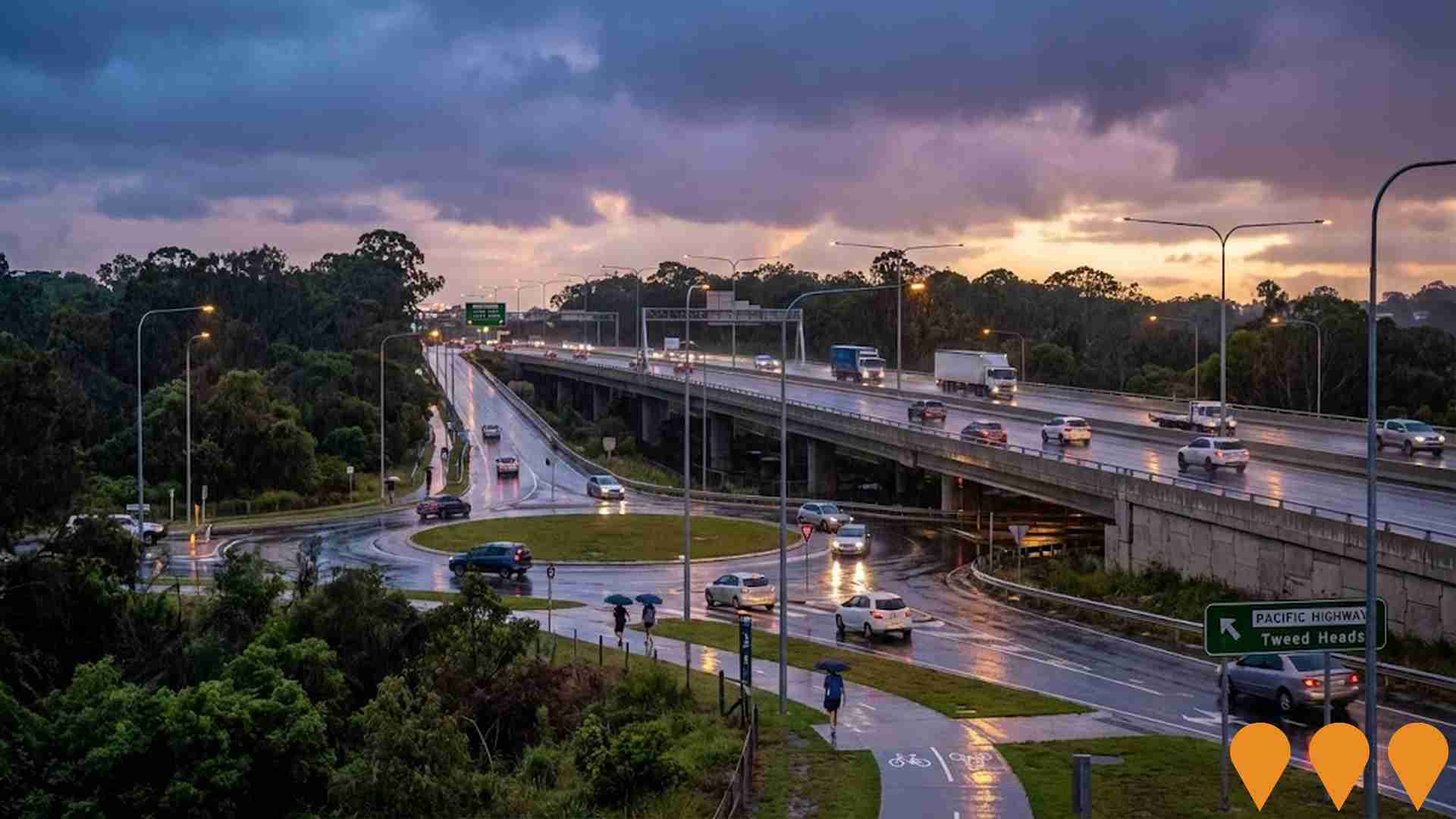
Rise at Terranora Development
$1.3 billion development on 126 hectares adding approximately 750 lots. Features extensive open space network, sports fields, retail village centre, and adjacency to established schools. The last land development of this size in the region.
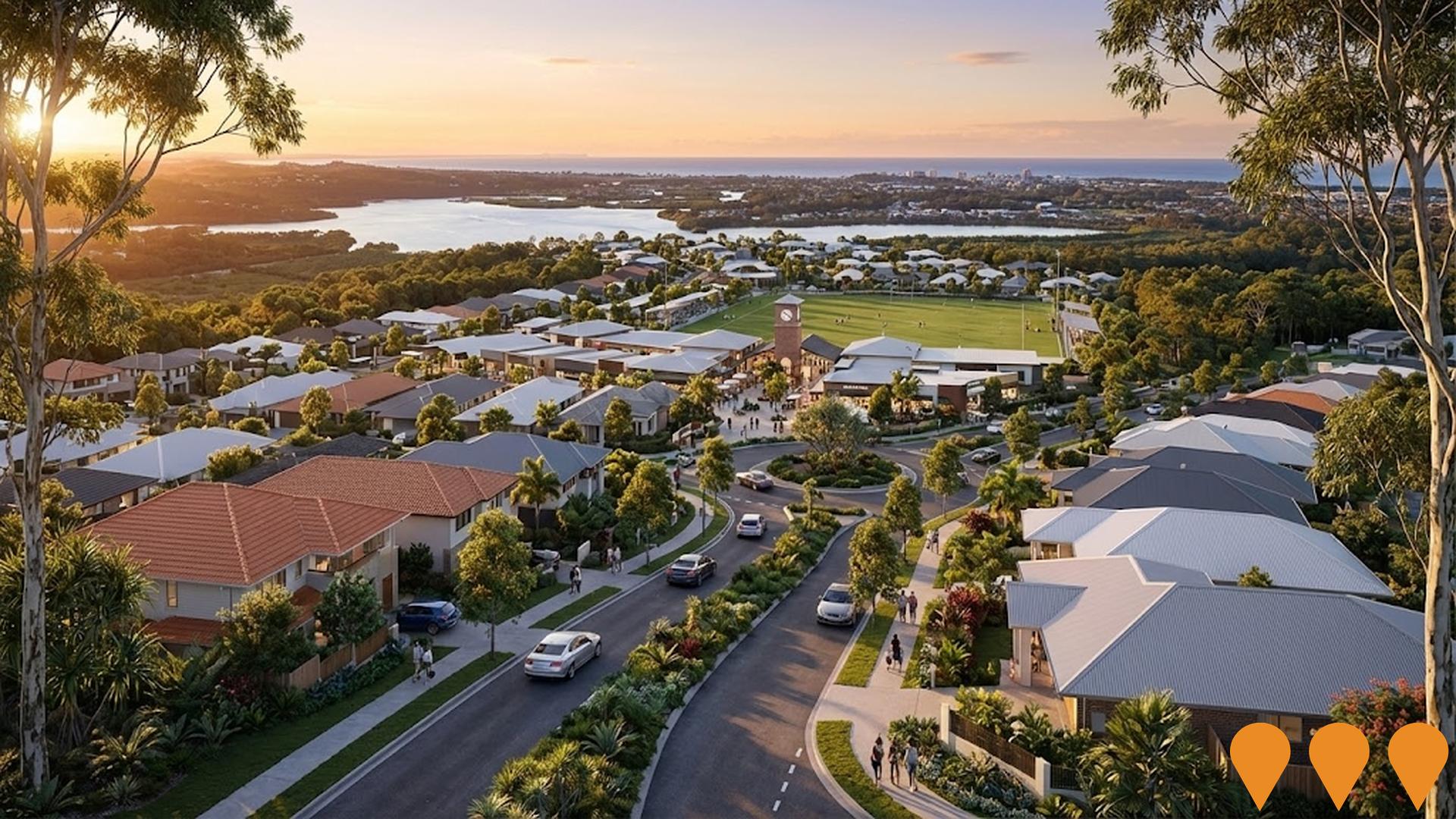
13-19 Enid Street Residential Towers
Two 14-storey residential towers comprising 122 apartments with communal recreation facilities including pool, gym, and outdoor areas. The Jackson Teece-designed project features varying apartment sizes from one to four bedrooms with three basement parking levels.

Tweed Heads South Public School Upgrade
Upgrade delivering 11 new permanent learning spaces, a new library, a new entrance, extended and refurbished preschool, a new canteen and OOSH facilities, refurbished administration areas, and improved playground, sports court and outdoor spaces. Construction was completed in September 2024.

Tweed Heads Social Housing Development
New social housing development providing 120 affordable dwellings for low-income families and seniors in the Tweed Heads area.
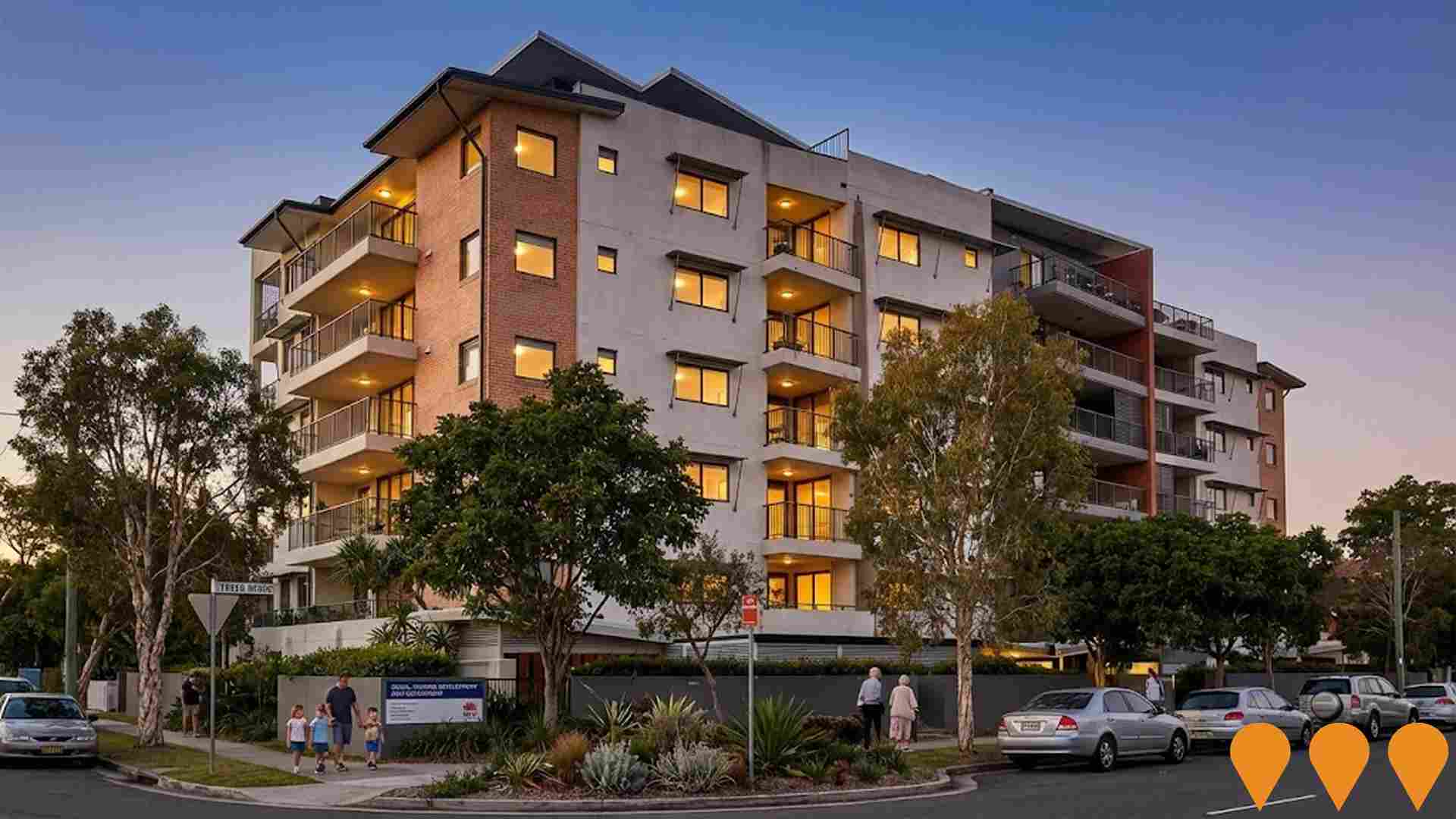
Tweed Heads Road Infrastructure Upgrades
Comprehensive road infrastructure upgrades including intersection improvements, cycling paths and pedestrian facilities throughout Tweed Heads.

Club Banora Master Plan Redevelopment
Strategic redevelopment of Club Banora including new undercover bowls facility to the south of the existing club, upgraded golf clubhouse, additional function rooms, expanded dining areas, modernised facilities, enhanced outdoor entertainment areas, new play area for families, and improved car parking. The project aims to create a premier community club destination serving the Tweed and Gold Coast region.
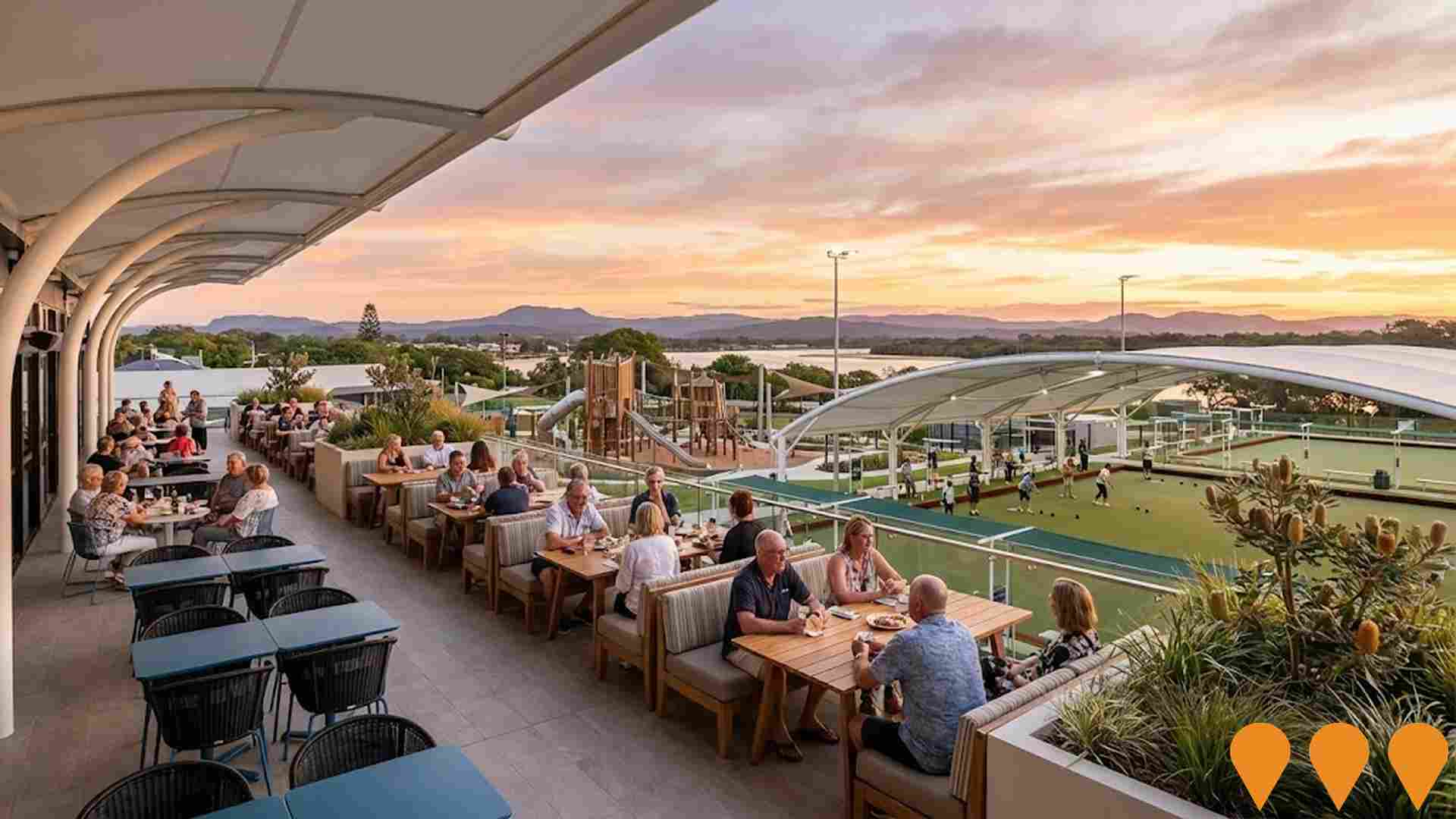
Employment
The labour market performance in Tweed Heads South lags significantly behind most other regions nationally
Tweed Heads South has a balanced workforce with white and blue collar jobs. Essential services sectors are well represented.
The unemployment rate as of June 2025 is 4.5%. There are 3,067 residents employed, which is 0.8% higher than Rest of NSW's rate of 3.7%. Workforce participation lags at 42.8%, compared to Rest of NSW's 56.4%. Key industries for employment among residents are health care & social assistance, accommodation & food, and retail trade.
The area has a strong specialization in accommodation & food, with an employment share of 1.8 times the regional level. Agriculture, forestry & fishing is under-represented, with only 0.9% of Tweed Heads South's workforce compared to 5.3% in Rest of NSW. The ratio of 0.8 workers per resident indicates a level of local employment opportunities above average. Between June 2024 and June 2025, the labour force decreased by 4.8%, while employment decreased by 4.1%, leading to a fall in unemployment rate by 0.7 percentage points. In contrast, Rest of NSW saw an employment decline of 0.1% and labour force growth of 0.3%, with a rise in unemployment rate by 0.4 percentage points. National employment forecasts from Jobs and Skills Australia, issued in May 2025, project national employment growth of 6.6% over five years and 13.7% over ten years. Applying these projections to Tweed Heads South's employment mix suggests local growth of approximately 6.6%% over five years and 13.8% over ten years.
Frequently Asked Questions - Employment
Income
Income metrics place the area in the bottom 10% of locations nationally according to AreaSearch analysis
Tweed Heads South had a median taxpayer income of $40,932 and an average income of $50,906 in the financial year 2022, according to postcode level ATO data aggregated by AreaSearch. This was below the national average for that year. The Rest of NSW had a median income of $49,459 and an average income of $62,998 during the same period. By September 2025, estimates suggest the median income in Tweed Heads South would be approximately $46,094 and the average around $57,325, based on a 12.61% growth since financial year 2022 as per Wage Price Index figures. The 2021 Census data showed that incomes in Tweed Heads South fell between the 2nd and 7th percentiles nationally for households, families, and individuals. Income analysis revealed that 33.0% of residents (2,831 people) earned within the $400 - $799 bracket, contrasting with regional levels where the $1,500 - $2,999 bracket was dominant at 29.9%. The concentration of 42.3% in sub-$800 weekly brackets indicated significant economic challenges for a substantial portion of the community. Housing affordability pressures were severe, with only 78.3% of income remaining after housing costs, ranking at the 3rd percentile nationally.
Frequently Asked Questions - Income
Housing
Tweed Heads South displays a diverse mix of dwelling types, with above-average rates of outright home ownership
Dwelling structure in Tweed Heads South, as evaluated at the 2016 Census, comprised 50.7% houses and 49.3% other dwellings (semi-detached, apartments, 'other' dwellings). This compares to Non-Metro NSW's 66.3% houses and 33.8% other dwellings. Home ownership in Tweed Heads South was at 47.5%, with the remainder of dwellings either mortgaged (21.9%) or rented (30.5%). The median monthly mortgage repayment in the area was $1,733, compared to Non-Metro NSW's average of $1,872. The median weekly rent figure was recorded at $390, compared to Non-Metro NSW's $400. Nationally, Tweed Heads South's mortgage repayments are lower than the Australian average of $1,863, while rents exceed the national figure of $375.
Frequently Asked Questions - Housing
Household Composition
Tweed Heads South features high concentrations of lone person households and group households, with a lower-than-average median household size
Family households constitute 57.6% of all households, including 15.4% couples with children, 28.0% couples without children, and 12.9% single parent families. Non-family households account for the remaining 42.4%, with lone person households at 37.9% and group households comprising 4.5%. The median household size is 2.1 people, which is smaller than the Rest of NSW average of 2.4.
Frequently Asked Questions - Households
Local Schools & Education
Tweed Heads South faces educational challenges, with performance metrics placing it in the bottom quartile of areas assessed nationally
The area's university qualification rate is 13.6%, significantly lower than the NSW average of 32.2%. Bachelor degrees are most common at 9.8%, followed by postgraduate qualifications (2.3%) and graduate diplomas (1.5%). Vocational credentials are prevalent, with 39.5% of residents aged 15+ holding such qualifications - advanced diplomas at 10.3% and certificates at 29.2%. A total of 23.0% of the population is actively engaged in formal education, including 7.7% in primary, 6.5% in secondary, and 3.0% in tertiary education.
There are eight schools operating within Tweed Heads South, educating approximately 1,654 students. The educational mix includes three primary, three secondary, and two K-12 schools. School capacity exceeds typical residential needs (19.3 places per 100 residents vs 14.3 regionally), indicating the area serves as an educational hub for the broader region. Note: where schools show 'n/a' for enrolments, please refer to the parent campus.
Frequently Asked Questions - Education
Schools Detail
Nearby Services & Amenities
Transport
Transport servicing is moderate compared to other areas nationally based on assessment of service frequency, route connectivity and accessibility
Transport analysis indicates 62 operational transport stops in Tweed Heads South, consisting of bus services. These stops are served by 58 unique routes, facilitating a total of 1,431 weekly passenger trips. Transport accessibility is deemed excellent, with residents situated on average 186 meters from the nearest stop.
Service frequency averages 204 trips daily across all routes, equating to approximately 23 weekly trips per individual stop.
Frequently Asked Questions - Transport
Transport Stops Detail
Health
Health performance in Tweed Heads South is a key challenge with a range of health conditions having marked impacts on both younger and older age cohorts
Tweed Heads South faces significant health challenges, with various conditions affecting both younger and older residents. Private health cover stands at approximately 46% (~3,980 people), significantly lower than Rest of NSW's 49.3%, and the national average of 55.3%. Arthritis and mental health issues are prevalent, impacting 13.6% and 9.5% respectively.
Conversely, 54.0% report no medical ailments, compared to 64.2% in Rest of NSW. The area has a higher proportion of seniors aged 65 and over (33.5%, or 2,874 people), compared to Rest of NSW's 26.1%. Health outcomes among seniors largely align with the general population's health profile.
Frequently Asked Questions - Health
Cultural Diversity
In terms of cultural diversity, Tweed Heads South records figures broadly comparable to the national average, as found in AreaSearch's assessment of a number of language and cultural background related metrics
Tweed Heads South's cultural diversity is roughly aligned with the wider region, with 87.1% of its population being citizens, 78.9% born in Australia, and 92.4% speaking English only at home. Christianity is the predominant religion in Tweed Heads South, accounting for 57.8% of people, compared to 51.3% across Rest of NSW. The top three ancestry groups are English (32.4%), Australian (26.6%), and Irish (8.7%).
Notably, Australian Aboriginal representation is higher at 4.7% in Tweed Heads South versus the regional average of 3.0%. New Zealanders make up 0.9%, compared to the region's 0.7%, and Maori individuals account for 0.7%, slightly above the regional average of 0.5%.
Frequently Asked Questions - Diversity
Age
Tweed Heads South ranks among the oldest 10% of areas nationwide
Tweed Heads South has a median age of 53, which is higher than the Rest of NSW figure of 43 and the national norm of 38. Compared to Rest of NSW, Tweed Heads South has a higher concentration of residents aged 75-84 (12.7%) but fewer residents aged 5-14 (9.1%). This concentration of 75-84 year-olds is significantly higher than the national figure of 6.0%. Between the 2021 Census and the present, the median age has decreased by one year from 54 to 53, indicating a shift towards a younger demographic. Specifically, the 35-44 age group has grown from 9.2% to 10.9%, while the 0-4 cohort increased from 4.0% to 5.3%. Conversely, the 65-74 age group has declined from 15.6% to 14.0%, and the 75-84 group dropped from 14.0% to 12.7%. By 2041, demographic modeling suggests that Tweed Heads South's age profile will change significantly. The 25-34 age cohort is projected to grow steadily, increasing by 184 people (21%) from 861 to 1,046. Meanwhile, both the 65-74 and 55-64 age groups are expected to decrease in numbers.

